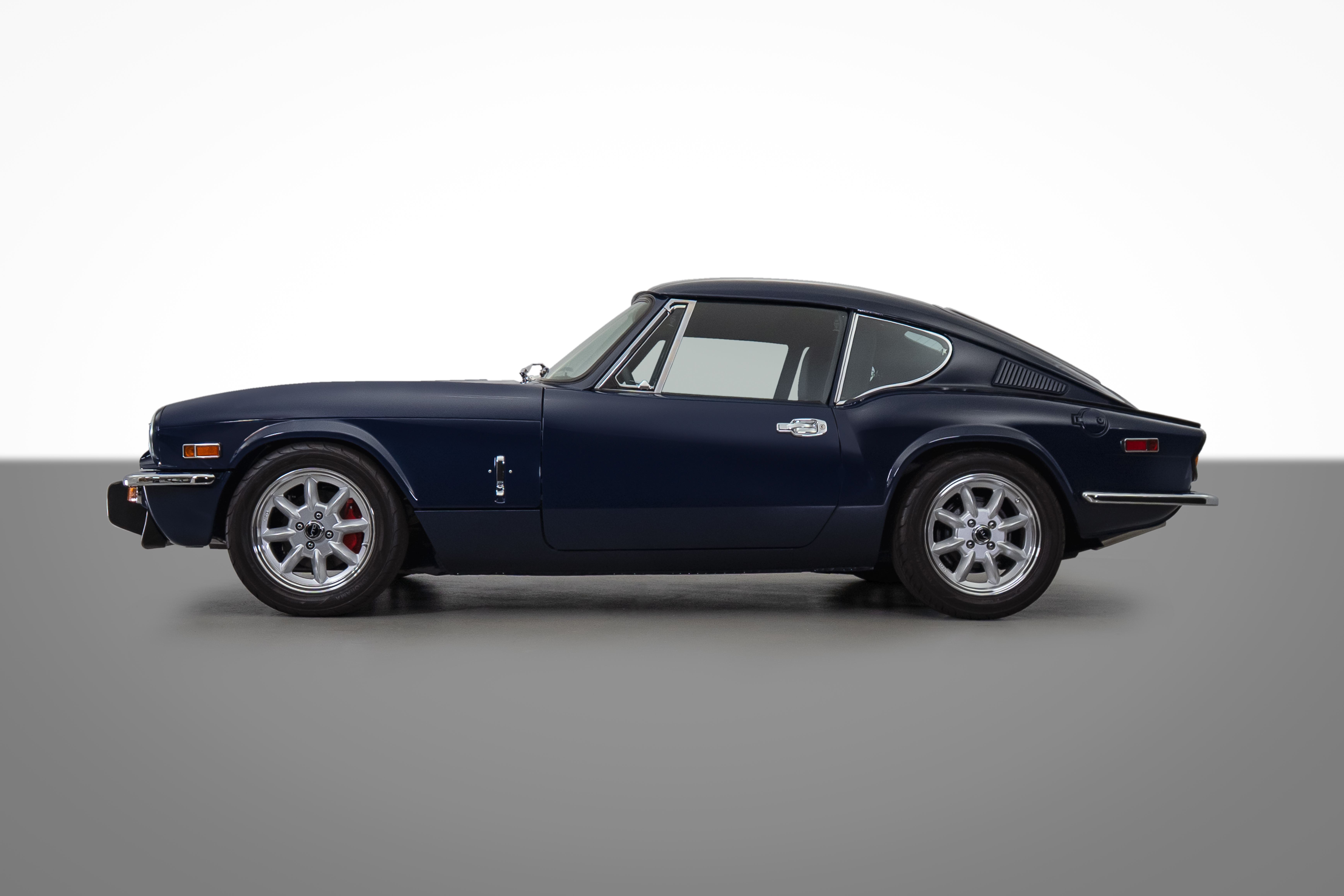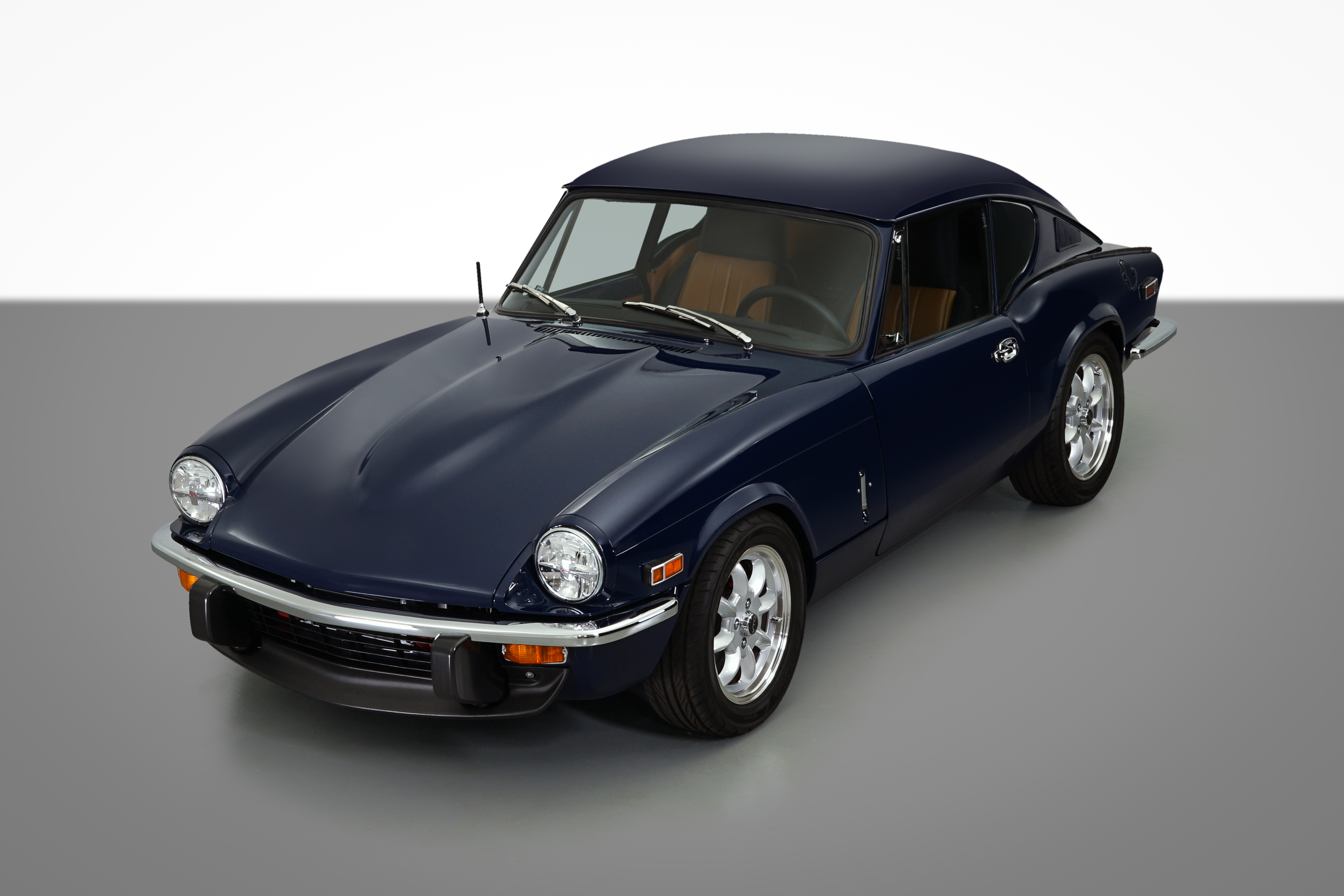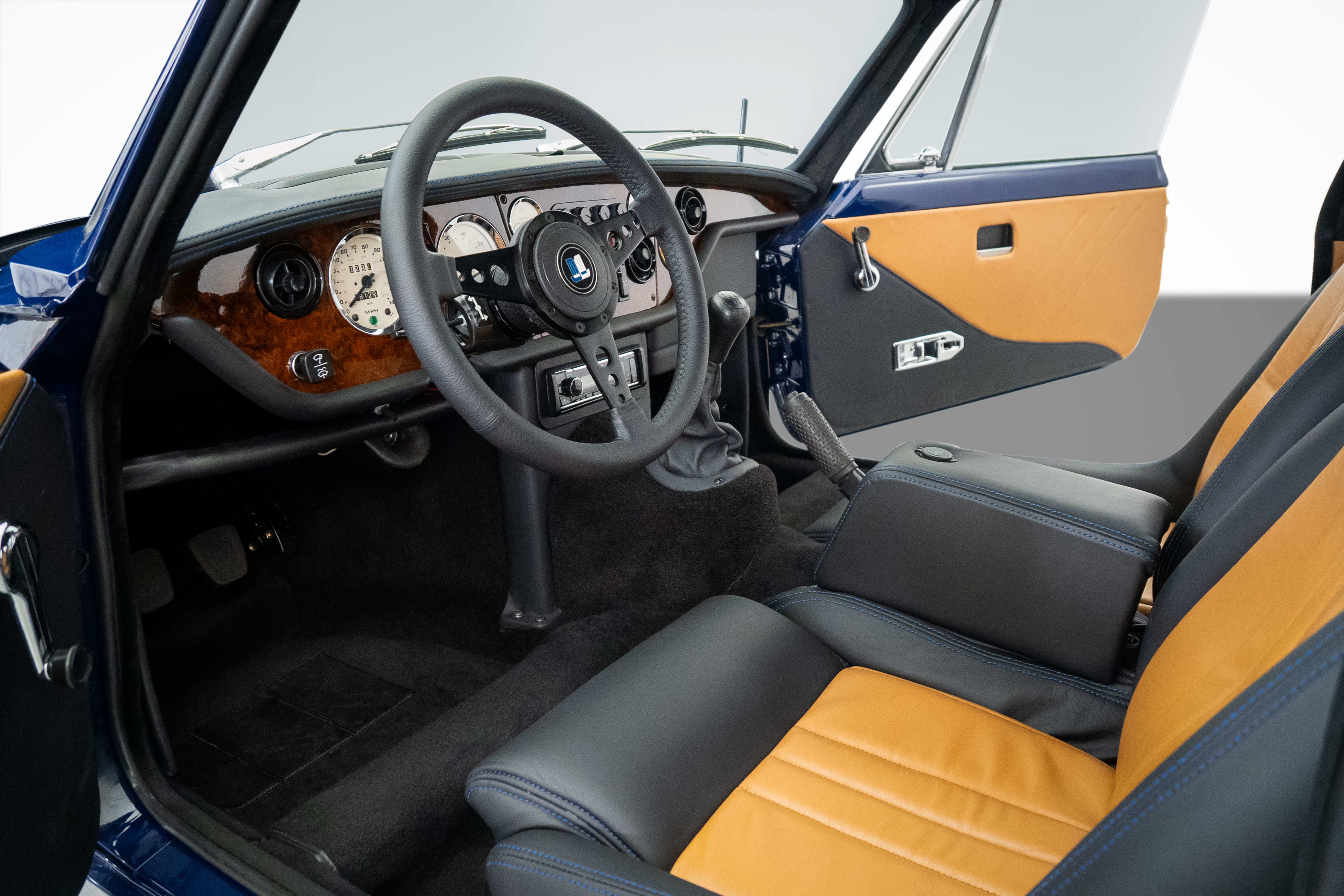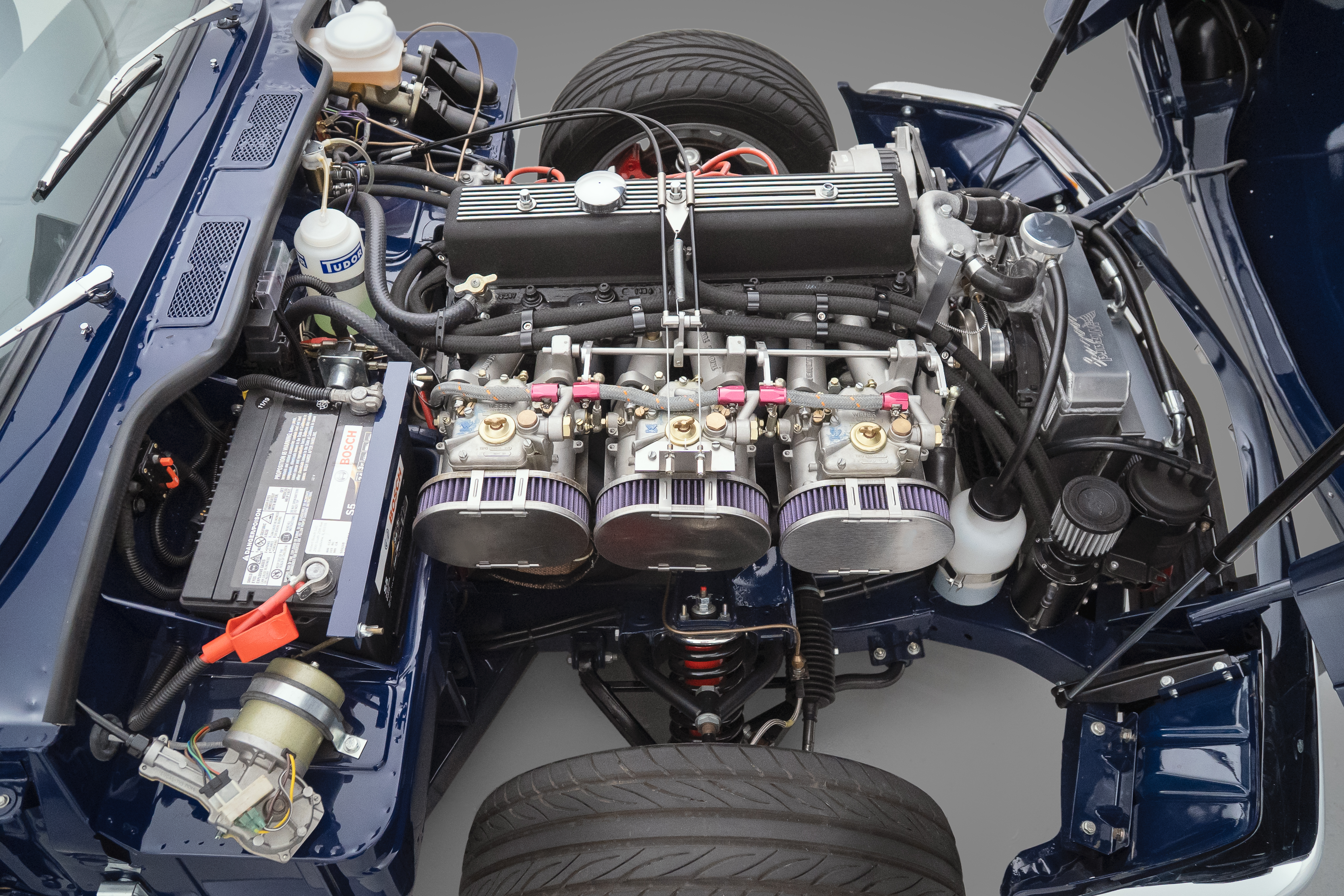

1973 Triumph GT6 MKIII
Click any photo to view fullscreen. Mobile users can pinch to zoom. Tap ‘X’ to close.
SPEED
SPECIFICATIONS
- Engine: Inline-6
- Transmission: 4-speed manual (with optional overdrive)
- Drivetrain: Rear-wheel drive (RWD)
- Chassis: Steel monocoque with separate body panels
- Suspension: Independent front and rear suspension (rear redesigned swing-spring layout)
- Brakes: Front disc brakes, rear drum brakes
- Wheels: 13-inch steel wheels (with optional wire wheels)
- Weight: Approximately 1,950 lbs (885 kg)
- Fuel Economy: Around 25 mpg
- Seating Capacity: 2
- Body Style: 2-door fastback coupe
- Production Year: Final model year (1973)
1973 Triumph GT6 MKIII
The 1973 Triumph GT6 MkIII captures the essence of classic British motoring with its striking fastback silhouette, smooth curves, and sporty attitude. This final iteration of the GT6 series blends timeless design with mechanical refinement, making it a standout choice for enthusiasts and collectors alike.
With a rear-wheel-drive layout and crisp manual gearbox, every drive feels connected and rewarding. The upgraded suspension in this model delivers improved handling and a more confident ride, turning every twist and turn into pure driving pleasure.
Its design—rooted in race-inspired styling—radiates vintage charm while offering the practicality of a fixed roof coupe. Whether displayed at a car show or carving through scenic roads, the GT6 MkIII offers a blend of character, history, and exhilarating performance that’s hard to find today.




